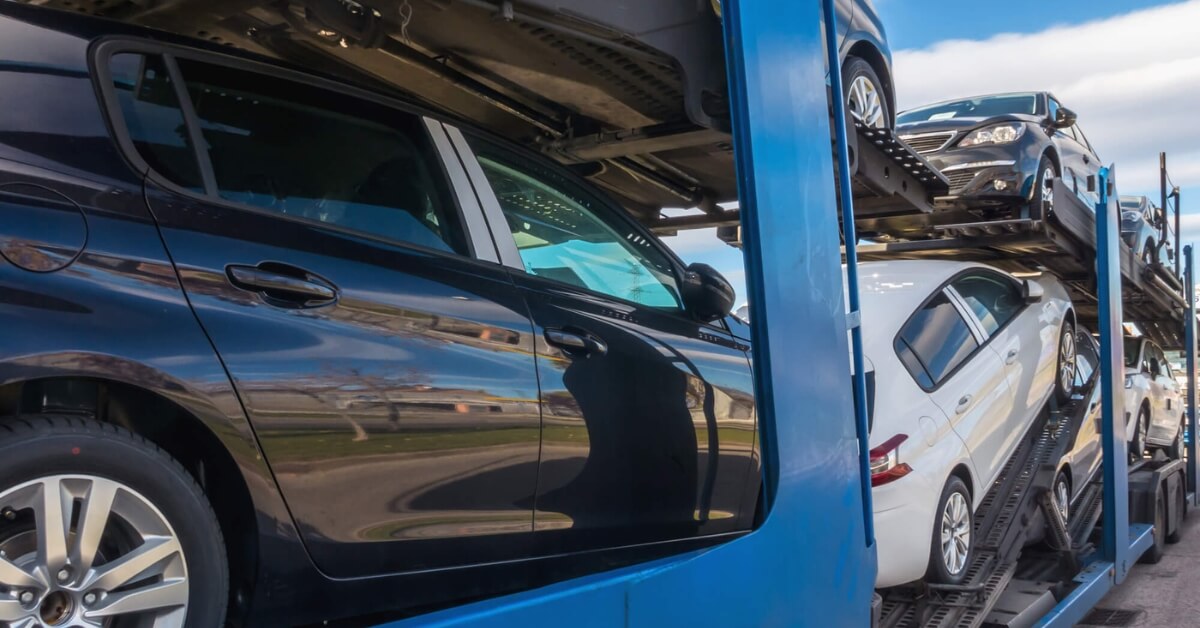8 Requirements in an RV Roadside Assistance Plan
Who hasn’t imagined the excitement of packing up their possessions and exploring their home state or farther afield? It’s why 11% of American households own a recreational vehicle (RV).
That’s a whopping 14.1 million homes contributing to this growing market sector and enjoying the experience of living on the open road where there are lots of adventures to be had.
There are also several potential problems that could jinx the journey. An RV roadside assistance plan is one of the most important things to take with you. There’s more going on with an RV than with a standard vehicle; therefore, the odds of something landing you in a jam are higher.
There will be no need to worry after you’ve read our guide on RV roadside assistance plans, which will help you weigh all the pros, cons, and hidden pitfalls that may impact your next road trip.
What RV Roadside Assistance Is (and What It Isn’t)

These plans are built on the same foundations as a standard roadside assistance plan. One of the key things for RV owners to remember is that roadside assistance and towing are two different things that aren’t always found together in service coverage.
Here’s how those differences look, along with some other important considerations for RV drivers:
–Towing vs. Roadside Assistance
Roadside assistance can include many things that are less labor- and time-intensive than towing a vehicle. Some examples are changing a tire, topping up gas, or jumpstarting a worn-out battery.
It can also get your keys out of your car or extricate you if you’re stuck in snow or mud. Towing services are a feature of some roadside plans – but not all – and should not be confused with recovery services.
-RV Roadside Assistance Plans Aren’t Insurance
RV insurance policies of various kinds exist to partially or wholly cover expenses incurred by things like breakdowns, repairs, accidents, or theft. They don’t send anyone to help you if you’re stalled or stranded.
An RV assistance plan won’t cover those things listed that insurance does, but it will dispatch a roadside technician to assist you.
-RV Plans Are Basically the Same as Other Types
RV roadside assistance plans are essentially identical to those covering cars and trucks. The biggest thing for RV owners to consider is how difficult some roadside services might be if the company doesn’t have the right equipment.
For example, towing or pulling a car out of a ditch is a lot easier than for a Class A RV! RV owners should try to get plans that will cover their weight class.
-Coverage Can Vary from State to State
Two separate drivers have the same RV with roadside assistance plans from the same provider. They should have the same coverage, right? This isn’t always the case if they live in different zip codes.
This is because the topography of states can vary widely, making it difficult for RV owners in wilder and more remote regions to get the same protection as those in easier-to-navigate areas.
The millions of RVs on the road need a good roadside assistance plan. The smartest drivers will already have one or be actively considering the many companies looking to provide coverage.
The trick is to take your time reading the small print to see how well the various plans will serve your specific needs and the size and model of your RV.
8 Features of the Best RV Roadside Assistance Plans
Imagine the frustration of running into RV roadside trouble only to discover too late that the service or services you require aren’t covered.
Another scenario: They are covered, but to such a limited degree that you still find yourself in a fix! Here are eight points to consider when looking for the dream roadside assistance plan for your RV:
1. It Covers Your RV Type for the Desired Services
Sounds obvious, right? Not so much! Your RV’s size and weight class could mean some plans won’t cover your vehicle, while others are aimed solely at towable RVs, not drivable ones (and vice versa). The plan you choose should be tailored to what you own.
Plans increase in quality the more types of roadside assistance they offer, so try to get one that at least covers the most commonly required services. A plan that can winch you out of being stuck is particularly useful for RV owners who are often out on the backroads in all weathers.
2. It Covers Towed Other Drivers
Others who are driving your RV, that is! You’re not always at the wheel and may have passed it to a member of your family who’s touring without you.
Primary drivers whose family members also have their licenses may benefit more from finding a roadside assistance plan that will cover the vehicle regardless of their presence. The alternative is paying extra to provide individual coverage for anyone who may end up taking the wheel.
3. It Covers Towed Vehicles
Many RV owners take another vehicle with them, which is why you’ll often see cars, bikes, or watercraft along for the ride. The better RV roadside assistance plans will extend coverage to these secondary vehicles.
The really good ones cover secondaries even when you don’t own them and are renting or borrowing instead.
4. It Empowers You Regarding Allowed Distances
A roadside assistance plan that incorporates towing provides extra peace of mind only if you’ll be towed a workable distance. Some plans may only tow you to the nearest RV dealer or service station (or a certain number of miles), while others let you decide where you’re taken.
Plans also limit the range you can be pulled back onto the road if you drive or slide off, so opt for the biggest number you can get here.
5. The Cost Is Fair
Roadside assistance is usually a quick and low-labor thing that shouldn’t cost an arm and a leg. Regular maintenance on your RV and a responsible attitude to driving should mean drivers hardly ever need to use their RV roadside assistance plans.
It’s a smart idea to cover yourself for the core roadside assistance services, then consider paying extra for other features (more on those next). Shop around between providers to gauge the fairest price.
6. There’s the Option of Some Money-Saving Perks
Some roadside plans go above and beyond covering your RV against typical issues like busted tires and dead batteries. Some offer discounts on replacing RV parts, while others may reimburse you if you have to spend money to book temporary accommodation or rent a vehicle due to an RV breakdown issue.
It’s nice to have options because everyone has different requirements for peace of mind.
7. They Don’t Exclude You if You’re Not a Member
AAA is a top-rated organization for good reasons. They also won’t let you have their RV roadside assistance plan if you don’t already have a membership. This probably won’t bother existing AAA members, but it may be a hard pass for everyone else.
The flip side of this situation is that you may get a discount on roadside assistance plans from companies who require membership; it all depends on the provider.
8. You Know Your End of the Bill
The plan you’re considering will tell you which roadside assistance services you can expect to receive. Does it tell you how much of the bill you’ll be expected to pay? That’s very different and is one of those things you should never take for granted.
For example, you need a tire change but don’t have a spare onboard. Who pays for the spare – you or the plan? Make sure you know how much you’ll be expected to fork out (if anything) for each roadside service you’re covered for.
Those with RV roadside assistance plans and those without can both benefit from having a reliable auto transport company on speed dial. These are the teams that are licensed and insured, have a variety of recovery vehicles for various jobs, and who’ll treat you and your RV with the utmost care.
Here are some other hallmarks of quality to look out for the next time you need roadside help.
Contact the Geyers Team for Reliable RV Rescue
We’re here for you 24/7, 365 days a year, whether you have an RV roadside assistance plan or not!
We can assist with the simpler stuff like gas or tire trouble, or we can provide heavy-duty towing and extrication services to get you out of even the tightest spots.
Just call (301) 298-8519 any time to have one of our trained and friendly staff come to your location or visit our contact page for more ways to get in touch!
FAQs About RV Roadside Assistance Plans
What are the benefits of having an RV roadside assistance plan?
Some benefits of having an RV roadside assistance plan include 24/7 emergency support, towing services, fuel delivery, battery jump-starts, tire changes, locksmith services, and access to a network of qualified service providers.
How does an RV roadside assistance plan work?
When you encounter a problem on the road, you can contact the roadside assistance provider, and they will dispatch a professional to assist you. They will either fix the issue on the spot or arrange for towing to a nearby repair facility.
What types of incidents are covered by an RV roadside assistance plan?
Common incidents covered by RV roadside assistance plans include mechanical breakdowns, flat tires, dead batteries, running out of fuel, lockouts, and accidents.
Can I get RV roadside assistance if I'm not the owner of the RV?
It depends on the specific terms and conditions of the roadside assistance plan. Some plans only cover the named owner of the RV, while others may offer coverage to authorized drivers as well. It’s important to review the policy details to understand who is covered.
Are there any limitations to RV roadside assistance coverage?
Coverage limitations may vary between different plans, but common limitations can include distance restrictions for towing services, certain exclusions for pre-existing conditions, and limits on the number of service calls allowed per year.




